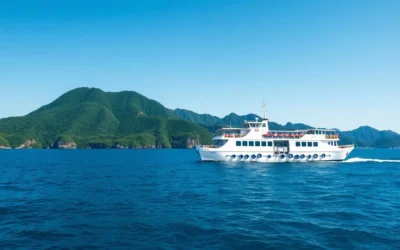✓ Accommodations✓ Flights✓ Rental Cars
Discover the hidden gems of Fukushima City, a resilient destination that offers a perfect blend of natural beauty, rich history, and cultural experiences. Located in the Tohoku region, this third-largest prefecture in Japan has transformed itself into a thriving tourist destination.
As you explore this diverse area, you’ll experience a mix of mountainous regions with excellent hiking trails, coastal areas with beautiful beaches, and a rich cultural heritage. With its unique blend of samurai heritage, natural wonders, hot springs, and culinary delights, Fukushima City deserves a spot on your travel itinerary.
From its remarkable attractions to its vibrant culture, you’ll find that this prefecture has something to offer every type of traveler, making it an unforgettable experience in the region.
Discovering Fukushima City: A Resilient Destination
As you explore Japan’s diverse regions, Fukushima City emerges as a hidden gem waiting to be discovered. Located in the Tohoku region, it’s a place where rich history and modern attractions blend together seamlessly.
Location and Geography
Fukushima City is situated in a basin surrounded by mountains, making it a unique geographical location. Spanning 746 square kilometers, it’s an area with diverse landscapes, from mountains to rivers. You can appreciate the natural beauty of this place, with its varied geography offering numerous opportunities for outdoor activities and exploration.
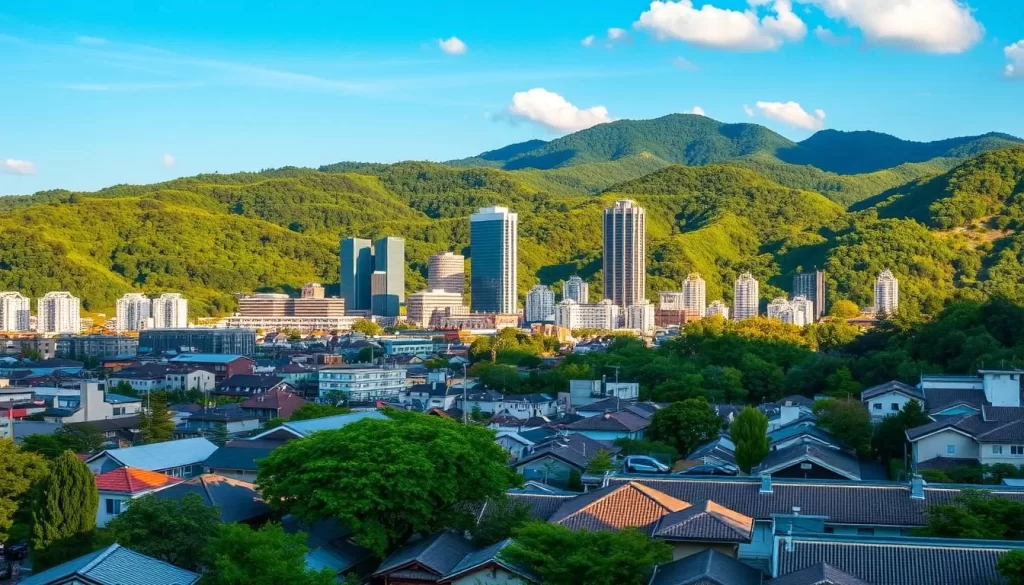
Brief History and Recovery
Fukushima City has a complex history that extends far beyond the 2011 earthquake and nuclear disaster. Over time, the city has developed a strong cultural identity, shaped by its historical significance. In recent years, Fukushima has made significant strides in recovery, transforming into a safe and welcoming destination for tourists. You can experience the city’s resilience firsthand by visiting its historical sites and learning about its remarkable recovery efforts, understanding the history that has shaped this place.
By visiting Fukushima City, you’re not only exploring a new place; you’re also supporting local communities that have worked tirelessly to rebuild and revitalize their hometown. The city’s story is one of resilience and recovery, making it a compelling destination for travelers interested in history, culture, and natural beauty.
Exploring Fukushima City’s Historical Treasures
Step into Fukushima City, and you’ll discover a treasure trove of historical landmarks and districts. The city is a place where tradition and history come alive, offering visitors a unique glimpse into Japan’s rich cultural heritage.
Downtown Aizuwakamatsu
Downtown Aizuwakamatsu is a charming area that retains much of its traditional charm. As you wander through its streets, you’ll feel like you’re traveling back in time. The area is known for its well-preserved architecture and traditional shops, making it a fascinating destination for any tourist. You can explore the local stores, taste traditional cuisine, and soak up the atmosphere of a bygone era.
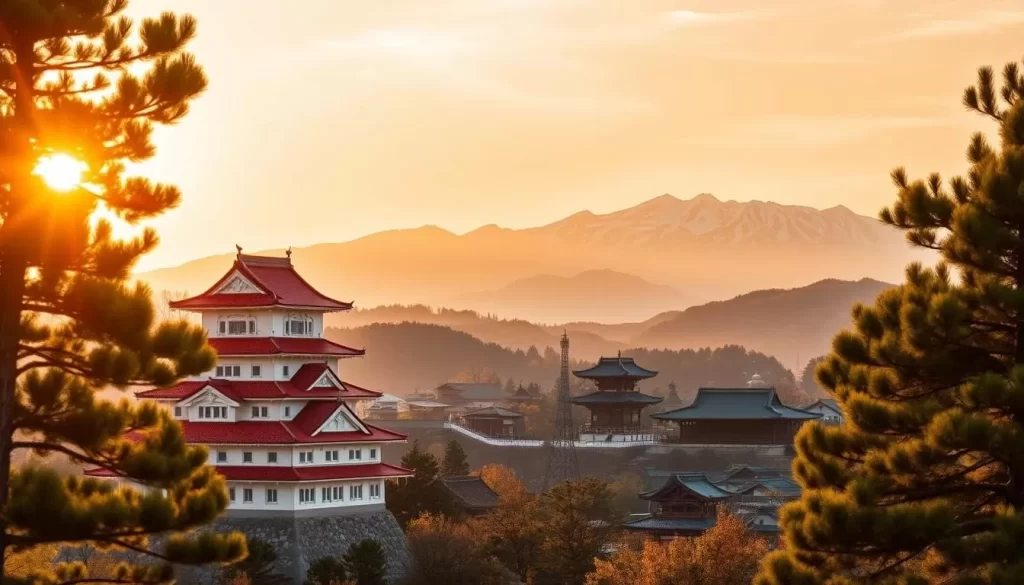
Historical Districts
Fukushima City boasts several historical districts that are remarkably well-preserved. One such district is Ouchi-juku, a former post town that has been restored to its Edo period glory. As you walk along its unpaved main street, you’ll be surrounded by buildings with thick thatched roofs, creating a picturesque scene. The district is lined with souvenir shops selling traditional crafts and local specialties, making it a great place to pick up unique mementos.
- Experience the charm of Fukushima’s historical districts, where traditional architecture and customs remain largely unchanged.
- Discover the historical significance of these areas, which once served as vital post towns along major trade routes.
- Explore the various shops and stalls selling traditional goods and souvenirs.
By visiting these historical districts, you’ll gain a deeper understanding of life during Japan’s feudal era, making your trip a truly enriching experience.
Tsuruga Castle: Symbol of Samurai Heritage

In the heart of Fukushima City, Tsuruga Castle awaits as a symbol of Japan’s feudal past. This historic fortress is a must-visit destination for anyone interested in exploring the region’s rich samurai heritage.
Castle History and Architecture
Tsuruga Castle, with its storied history, stands as a testament to the region’s cultural and military significance during the Edo period. The castle’s architecture reflects the traditional Japanese fortress style, with robust stone walls and elegant wooden structures. As you explore the castle, you can appreciate its historical importance and the role it played in the samurai era.
The castle’s design and construction reveal the advanced engineering skills of the time, providing a unique insight into Japan’s architectural heritage.
Museum Exhibits and Gardens
Within Tsuruga Castle lies a comprehensive museum that houses an impressive collection of samurai artifacts, including weapons, armor, and historical documents. You can view artifacts such as armor and weaponry, as well as ceramics and other lifestyle items, gaining a deeper understanding of daily life during the feudal era.
The surrounding grounds of Tsuruga Castle are equally captivating, featuring meticulously maintained gardens, ancient trees, and seasonal flowers that provide stunning views year-round. You can experience traditional Japanese culture by participating in a tea ceremony at the historic teahouse, where you can enjoy matcha and wagashi sweets in a peaceful zen garden.
Some highlights of your visit to Tsuruga Castle include:
– Exploring the comprehensive museum housed within the castle, featuring an impressive collection of samurai artifacts, weapons, armor, and historical documents.
– Learning about daily life during the feudal era through exhibits showcasing traditional clothing, household items, and cultural artifacts from the Aizu domain.
– Discovering the beautiful castle grounds, which feature meticulously maintained gardens, ancient trees, and seasonal flowers that provide stunning views year-round.
– Experiencing traditional Japanese tea ceremony at the historic teahouse located within the castle grounds, where you can enjoy matcha and wagashi sweets.
– Appreciating the panoramic views of Fukushima City from the castle’s top floor observation deck, which offers a spectacular perspective of the surrounding mountains and urban landscape.
Aizu Hanko Nisshinkan: Ancient Samurai School
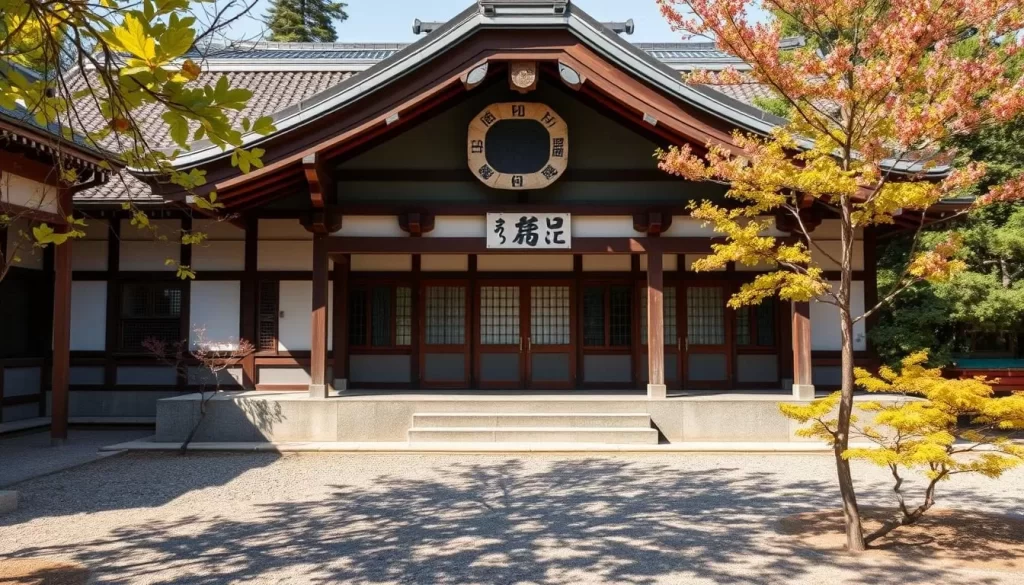
Discover the Aizu Hanko Nisshinkan, a faithful reconstruction of an Edo-period samurai academy that brings history to life through interactive experiences. This ancient samurai school, meticulously rebuilt after being destroyed during the Boshin War, now serves as a vibrant hands-on museum.
Educational Legacy
The Aizu Hanko Nisshinkan is more than just a historical site; it’s an immersive educational experience. You can explore the daily routines and rigorous schedule that young samurai followed, from early morning studies to evening martial arts practice. The school’s legacy is preserved through its magnificent architecture and dioramas depicting school life during the Edo Period.
By participating in the activities offered, you can gain insight into the samurai values and lifestyle that defined an era. The Nisshinkan’s educational approach was holistic, aiming to cultivate both the mind and the body.
Hands-on Samurai Experiences
Visitors to the Aizu Hanko Nisshinkan can enjoy a variety of hands-on samurai experiences. Try your hand at traditional samurai disciplines such as Japanese archery (kyudo), meditation (zazen), tea ceremony (chado), and calligraphy (shodo). You can also participate in cultural workshops where you can create your own Akabeko (red cow), a traditional good-luck charm of the Aizu region.
- Experience what life was like for young samurai students through hands-on activities.
- Try traditional samurai disciplines like kyudo, zazen, chado, and shodo.
- Learn about the daily routines and rigorous schedule of young samurai.
- Participate in cultural workshops to create your own Akabeko.
- Discover how these interactive experiences provide a deeper understanding of samurai values.
This experience allows you to step back in time and connect with the samurai heritage of Japan in a meaningful way.
Aizu Bukeyashiki: Step Into Samurai Life
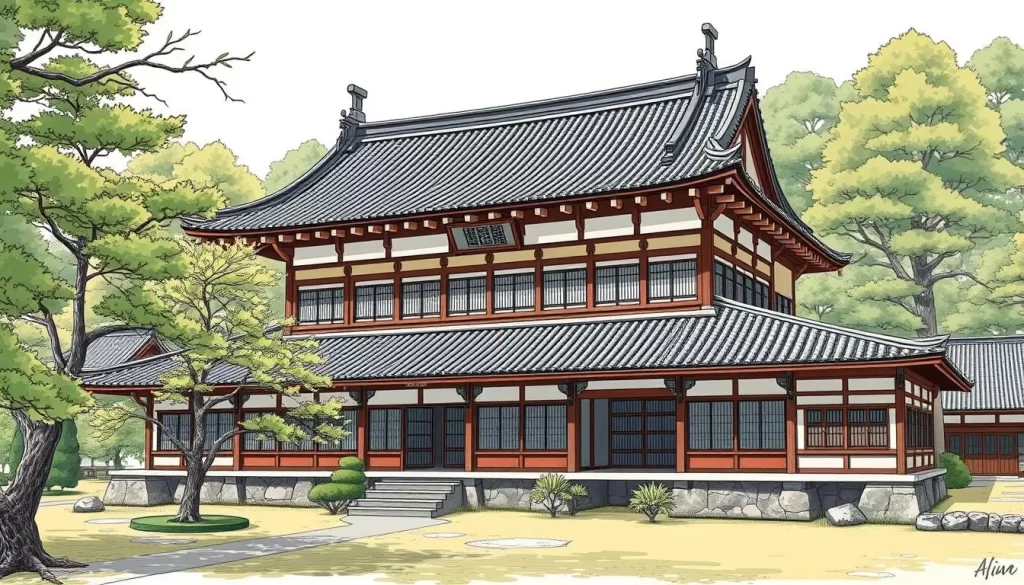
Immerse yourself in the world of samurai at Aizu Bukeyashiki, a remarkable historical site. This expansive area is home to multiple buildings that offer a unique glimpse into the lives of samurai.
Authentic Samurai Residence
Aizu Bukeyashiki is more than just a historical site; it’s an authentic samurai residence that has been meticulously preserved to reflect the lifestyle and traditions of the samurai class. As you explore this place, you’ll discover the intricacies of samurai life, from the elegant architecture to the beautifully maintained gardens.
Historical Exhibits and Grounds
The grounds of Aizu Bukeyashiki are quite expansive, featuring numerous buildings beyond the main residence, including an adorable teahouse and a rice mill. You can explore the various auxiliary structures, such as storehouses and servants’ quarters, and learn about their significance. Be sure to visit the well-stocked shops at the exit, offering a range of traditional crafts and modern interpretations of Aizu cultural motifs.
As you wander through the site, you’ll gain insights into the historical significance of the residence during the Boshin War through detailed exhibits featuring weapons, documents, and personal items belonging to the Saigo family. The beautiful Japanese garden, designed according to traditional principles, served both aesthetic and practical purposes for the samurai household.
Natural Wonders Around Mt. Bandai
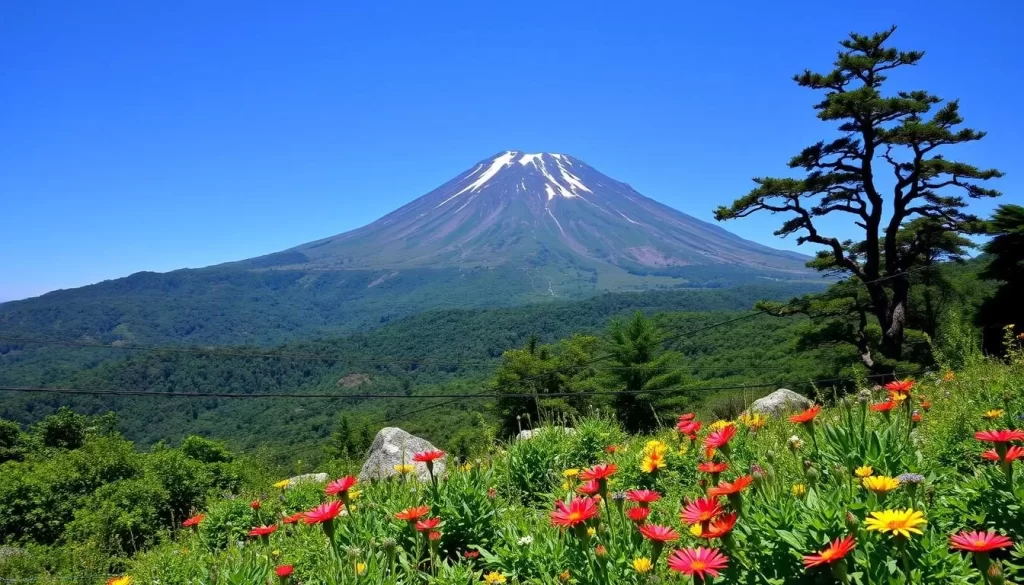
As you explore Fukushima City, you’ll discover the natural wonders surrounding Mt. Bandai, a destination that promises breathtaking landscapes and outdoor adventures. The area around Mt. Bandai is not just a testament to the region’s volcanic history but also a haven for outdoor enthusiasts.
Hiking Trails and Viewpoints
Mt. Bandai offers a variety of hiking trails that cater to different skill levels, ensuring that everyone can enjoy the beauty of nature. As you hike, you’ll be rewarded with stunning viewpoints that offer panoramic views of the surrounding landscape.
The trails around Mt. Bandai are well-marked and maintained, making it easy for you to navigate through the diverse terrain. Whether you’re looking for a leisurely walk or a challenging hike, the trails here provide an opportunity to connect with nature and enjoy the scenic beauty.
Seasonal Landscapes
The seasonal landscapes around Mt. Bandai are a major draw, with each time of year bringing its unique charm. In the spring, the area is filled with fresh greenery and wildflowers, while summer brings lush forests and cool mountain breezes. Autumn transforms the landscape into a tapestry of red, orange, and gold, and winter brings pristine snowscapes perfect for skiing and snowboarding.
The diverse ecosystem supported by the volcanic activity that shaped Mt. Bandai ensures that the area is teeming with unique plant and animal life throughout the changing seasons. Visiting Mt. Bandai during different times of the year offers a distinct experience, making it a destination worth visiting multiple times.
It’s worth noting that as you get closer to the winter months, some roads leading to the mountain may close due to snow, even if there’s not a lot of snow on the pavement. Therefore, it’s advisable to plan your visit according to the seasonal road conditions. The area surrounding Goshiki-numa is an all-season resort town, offering activities like hiking and boating in the warmer months and skiing in the winter. Many hotels in the area have open-air onsens with scenic views, providing a perfect way to relax after a day of exploring.
Goshiki-numa Ponds: Colorful Volcanic Lakes
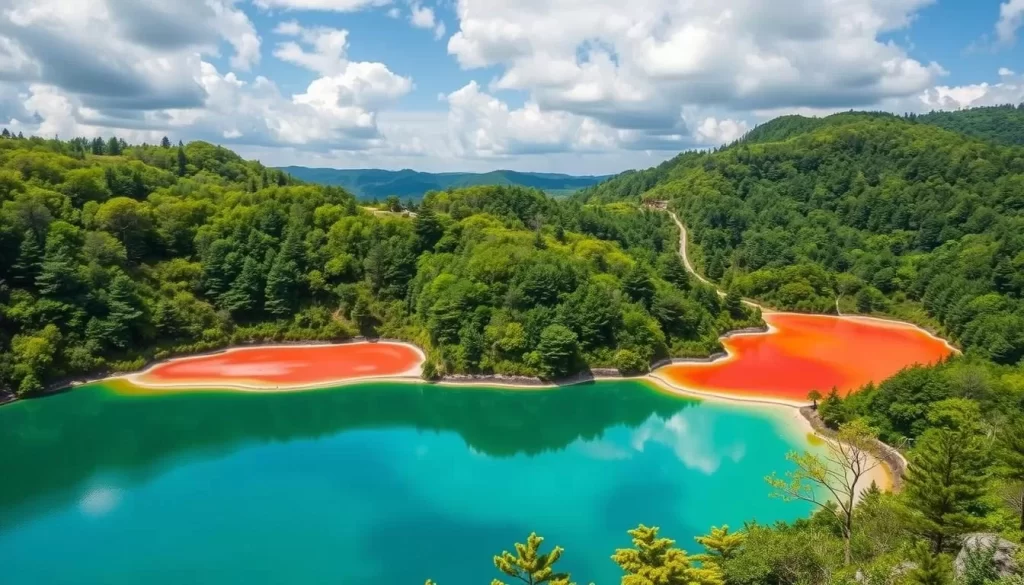
The Goshiki-numa Ponds, also known as the Five-Colored Lakes, are a stunning natural wonder in Fukushima, Japan, attracting visitors from around the world. This unique geological formation consists of five lakes, each displaying a distinct color due to the presence of various minerals.
The Five Colored Ponds
The five lakes that make up the Goshiki-numa Ponds are a result of volcanic activity in the region. The colors of the lakes range from emerald green to deep blue, and even milky white, creating a breathtaking spectacle. The lakes’ vibrant colors are not only aesthetically pleasing but also provide a glimpse into the region’s geological history.
Walking Trails and Viewing Spots
A 7.1 km one-way trail takes you along all five ponds, offering easy access to the lakes without requiring advanced hiking skills. The trail is relatively flat, making it an accessible nature experience for visitors of all ages and fitness levels. It takes approximately 1-1.5 hours each way, but you can take a break at Lake Hibara, where there’s a little restaurant and souvenir shop before heading back. Along the way, you’ll find numerous viewing spots and platforms that offer optimal angles for photographing the lakes’ vibrant colors.
As you walk along the trail, you’ll have the opportunity to appreciate the natural beauty of the Goshiki-numa Ponds from various viewpoints. The well-maintained walking trails and strategically placed rest areas ensure that you can enjoy the lakes at your own pace.
Ouchi-juku: Step Back in Time
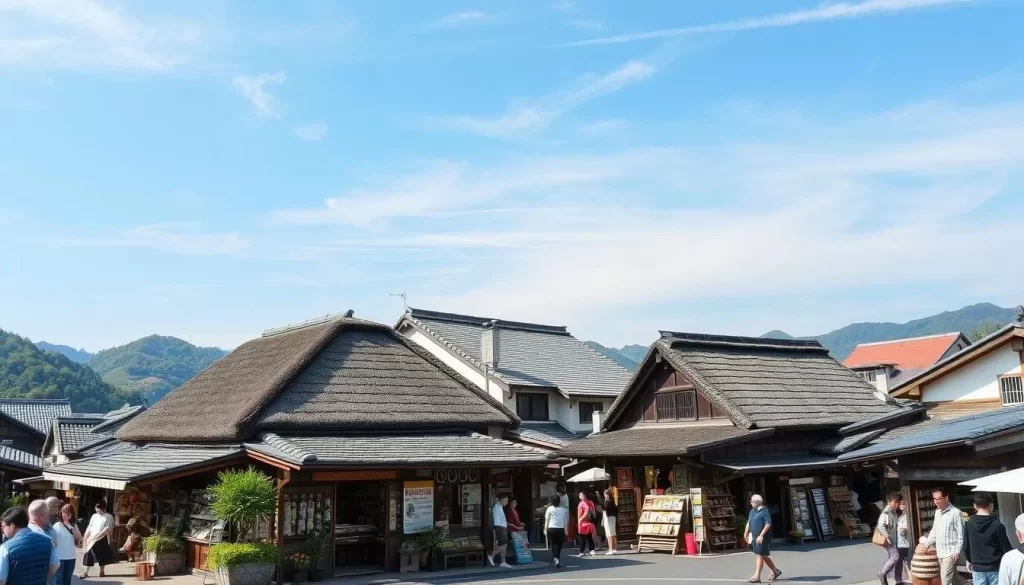
Step back in time and experience the traditional charm of Ouchi-juku, a historic village that has preserved the essence of Japan’s Edo period. As you stroll through the village, you’ll be surrounded by traditional architecture and the warm atmosphere of a bygone era.
Edo Period Architecture
The village boasts an impressive collection of Edo period buildings, with many structures dating back to the 17th century. The traditional architecture is characterized by wooden buildings with tiled roofs, creating a nostalgic ambiance that transports visitors to a different time. As you walk along the main street, you’ll notice the attention to detail in the construction and design of these historic homes.
Traditional Crafts and Souvenirs
Ouchi-juku is renowned for its traditional crafts and unique souvenirs. The main street is lined with lots of little souvenir shops that offer adorable tchotchkes and snacks. You’ll find the “akabeko,” a red cow with a nodding head, which is a signature toy of the Aizu area. According to legend, a real red cow inspired this icon by aiding in the construction of the Enzo-ji temple in Yanaizu in the 9th century.
- Browse the charming shops lining Ouchi-juku’s main street, where local artisans continue to create and sell traditional crafts.
- Discover unique souvenirs, including the famous “akabeko,” a traditional toy and good luck charm.
- Learn about the historical significance of these crafts and their connection to the daily lives of people during the Edo period.
- Sample local specialties and snacks available from vendors throughout the village.
- Appreciate how these small shops support local artisans and help preserve traditional crafting techniques in this area.
Cherry Blossom Viewing in Fukushima City
If you’re visiting Fukushima City during sakura season, you’ll be treated to a plethora of stunning cherry blossom viewing locations.
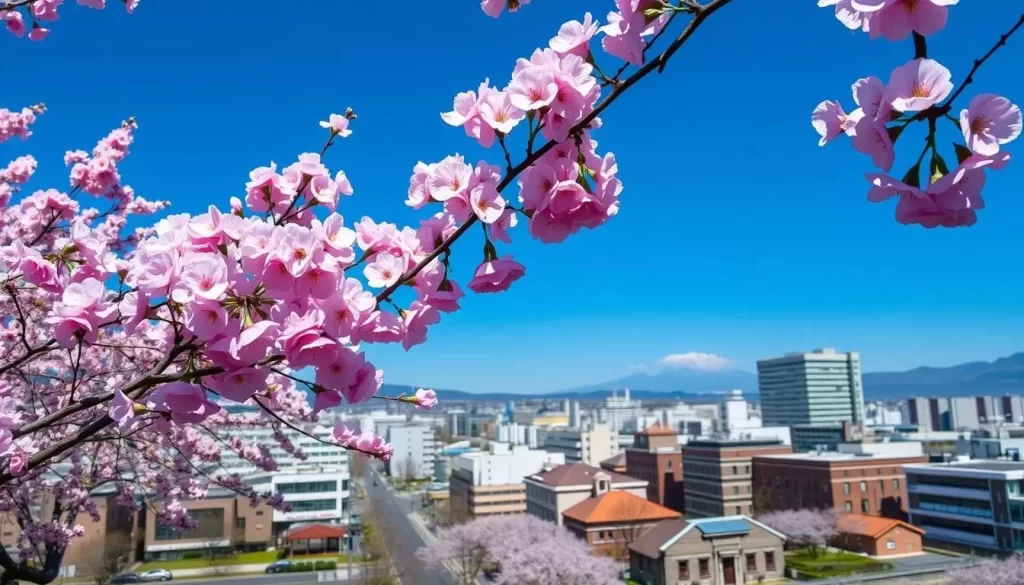
Fukushima City offers a variety of cherry blossom viewing spots, each with its unique atmosphere and sakura experience. One of the most famous cherry trees is the Miharu Takizakura, but there are many other locations worth visiting.
Miharu Takizakura: Japan’s Most Famous Cherry Tree
Miharu Takizakura is a 1,000-year-old weeping cherry tree that is a national treasure in Japan. This ancient tree is a must-visit during the cherry blossom season.
The tree is beautifully lit up at night, creating a breathtaking spectacle. Visitors can enjoy the tree’s beauty from a unique perspective, making it an unforgettable experience.
Other Prime Sakura Viewing Locations
Aside from Miharu Takizakura, there are several other prime viewing locations in Fukushima City. Some of these include:
- Matsugaoka Park, home to over 200 somei yoshino cherry trees that create tunnels of pink blossoms along walking paths.
- Mishima Hachiman Shrine, a peaceful shrine with an ancient, colorful sakura tree that blooms deep pink blossoms.
- Iwaki Park, a 71-hectare park offering cherry blossom-lined pathways and panoramic views from an elevated vantage point.
- Ogawasuwa Shrine, featuring a spectacular weeping cherry tree with cascading branches covered in blossoms.
These spots offer a range of experiences, from peaceful strolls to festive hanami celebrations, making Fukushima City an ideal destination for cherry blossom enthusiasts.
Fukushima City, Japan: Best Things to Do – Top Picks for Hot Springs
Hot springs, or onsen, are an integral part of Fukushima City’s culture and a must-visit attraction. The region is renowned for its natural hot springs, which are believed to have therapeutic properties.
Traditional Onsen Experiences
Fukushima City offers a range of traditional onsen experiences that allow visitors to relax and rejuvenate. These hot springs are rich in minerals such as sulfur and chloride, which are known to help with various health issues, including skin conditions and joint pain.
Enjoy the serene atmosphere of these natural hot springs, often surrounded by beautiful landscapes. Many of the onsen resorts in the area offer traditional ryokans and public bathhouses, providing a unique cultural experience.
| Onsen Location | Features | Accessibility |
|---|---|---|
| Yumoto Hot Springs | Sulfur and chloride-rich waters, traditional bathhouses | Accessible by train, with foot baths near the station |
| Local Ryokans | Traditional Japanese accommodations, onsen facilities | Various locations throughout Fukushima City |
Yumoto Hot Springs
Yumoto Hot Springs is one of Japan’s three oldest onsen destinations, boasting a history that spans over a thousand years. This historic hot spring town is a living museum of Japanese bathing culture.

Upon arrival at Yumoto Station, visitors can immediately experience the town’s hot spring culture by using the free footbaths, or “ashiyu,” located on the train platform and in the “Crane’s Foot Bath Plaza.” The area is also home to Sahako no Yu, a stylized bathhouse in the Edo style, and a fossil & coal museum showcasing the region’s mining history.
The unique waters of Yumoto are known for their mineral properties, believed to help with various ailments. Visitors can explore the charming onsen town, featuring traditional ryokans and public bathhouses, each offering a unique bathing experience.
Spa Resort Hawaiians: Tropical Paradise in Tohoku
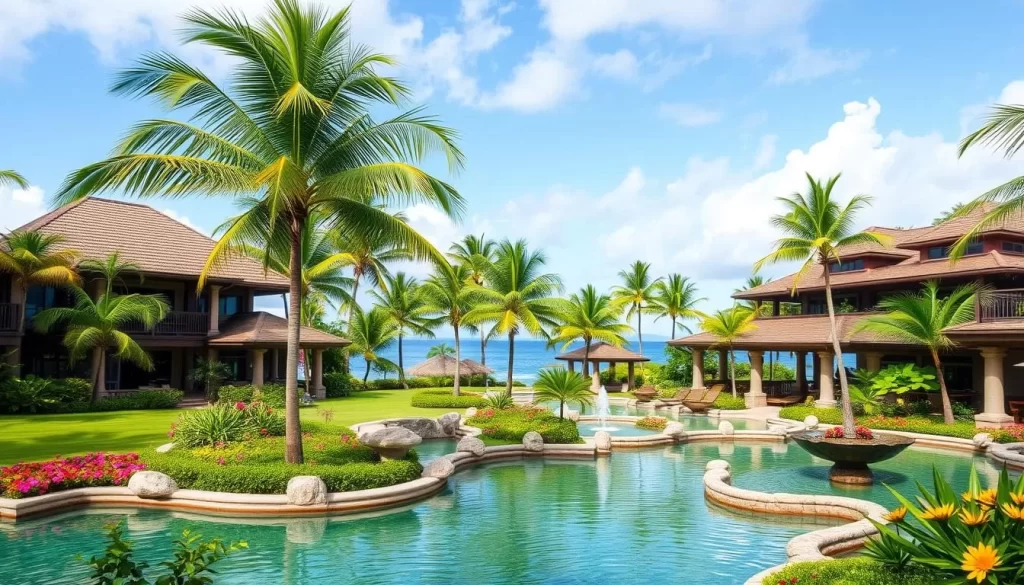
Spa Resort Hawaiians offers a unique blend of Hawaiian culture and Japanese hospitality in Fukushima. This resort is an ideal destination for those looking to experience something different in the Tohoku region.
For those who’ve never experienced an authentic onsen and are shy about the idea of going nude in front of others, Spa Resort Hawaiians is the perfect place to get acquainted. The resort allows bathers to wear bathing suits in many of the baths, making it an ideal introduction to the onsen experience for foreign visitors.
Water Park Attractions
The resort features an exciting water park with various attractions that cater to all ages. You can enjoy the thrill of water slides, splash around in the wave pool, or simply relax in the lazy river. The water park is a great place to have fun and cool off during your visit.
Enjoy the resort’s signature blend of Hawaiian and Japanese bathing cultures, where you can soak in hot spring waters while wearing swimsuits, making it an accessible introduction to onsen for international visitors.
Polynesian Shows and Cultural Experiences
Immerse yourself in the rich cultural heritage of Hawaii through the resort’s Polynesian shows and cultural experiences. Watch the world-famous hula shows performed by the resort’s dedicated dance troupe, whose story of revitalizing the local economy became the subject of the acclaimed film “Hula Girls.” You can also learn about the genuine therapeutic benefits of the resort’s baths, which use authentic hot spring water from the nearby Yumoto Hot Springs.
The resort has become not just a tourist attraction but a cultural institution that represents the resilience and adaptability of Fukushima’s communities. By visiting Spa Resort Hawaiians, you’re supporting local revitalization efforts.
Coastal Attractions in Iwaki
If you’re looking for a day by the sea, Iwaki City has plenty to offer. The city’s coastline is home to a variety of attractions that cater to different interests.
Benten-jima and Shioyazaki Lighthouse
Benten-jima Island and Shioyazaki Lighthouse are two of Iwaki’s most notable coastal attractions. You can explore the island and enjoy the scenic views of the surrounding area. The lighthouse offers a glimpse into the region’s maritime history.
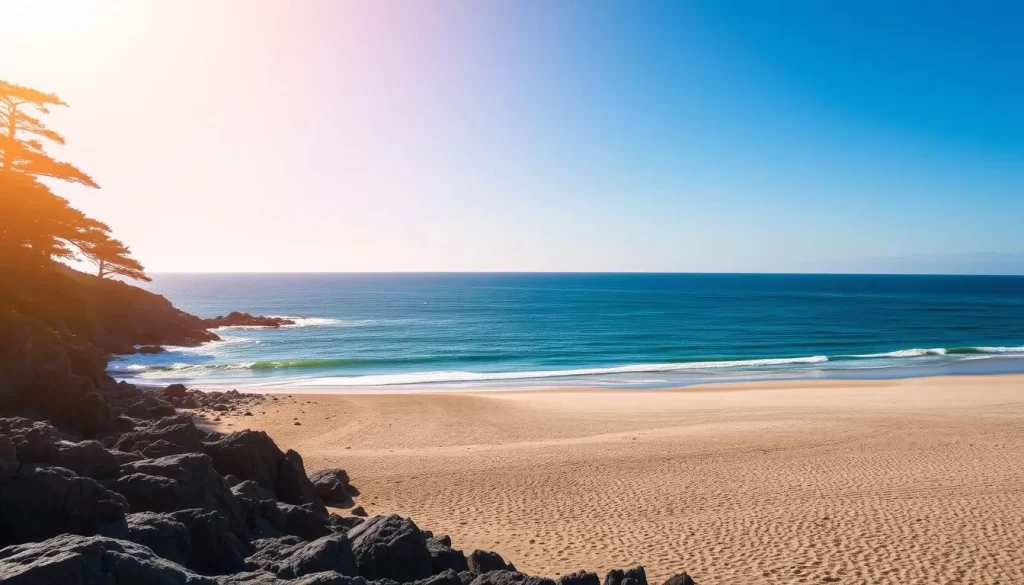
Onahama Port Area
The Onahama Port area is a vibrant coastal hub that offers a range of activities. You can start your visit at Misaki Park, which features beautiful ocean views, a hedge maze, and an extra-long roller slide. The park is also home to the Marine Tower, which provides 360-degree views of the harbor, and the Shiomidai Observation Deck, where you can watch the sunset over the Pacific Ocean.
After exploring the park, head to Lalamew, a market complex where you can sample fresh seafood and browse local souvenirs. Be sure to visit the Aquamarine Fukushima aquarium, which showcases marine ecosystems from around Fukushima and beyond. The aquarium features interactive touch pools and exhibits on sea life, making it a great destination for families.
- Explore the vibrant Onahama Port area, a coastal hub in Iwaki City that offers a variety of attractions.
- Visit Misaki Park for its beautiful ocean views and family-friendly attractions.
- Discover the Marine Tower and Shiomidai Observation Deck for stunning views of the coastline.
- Experience the bustling atmosphere of Lalamew market complex and sample fresh seafood.
- Don’t miss the Aquamarine Fukushima aquarium, featuring impressive exhibits on marine ecosystems.
Underground Adventures: Abukuma-do Caves
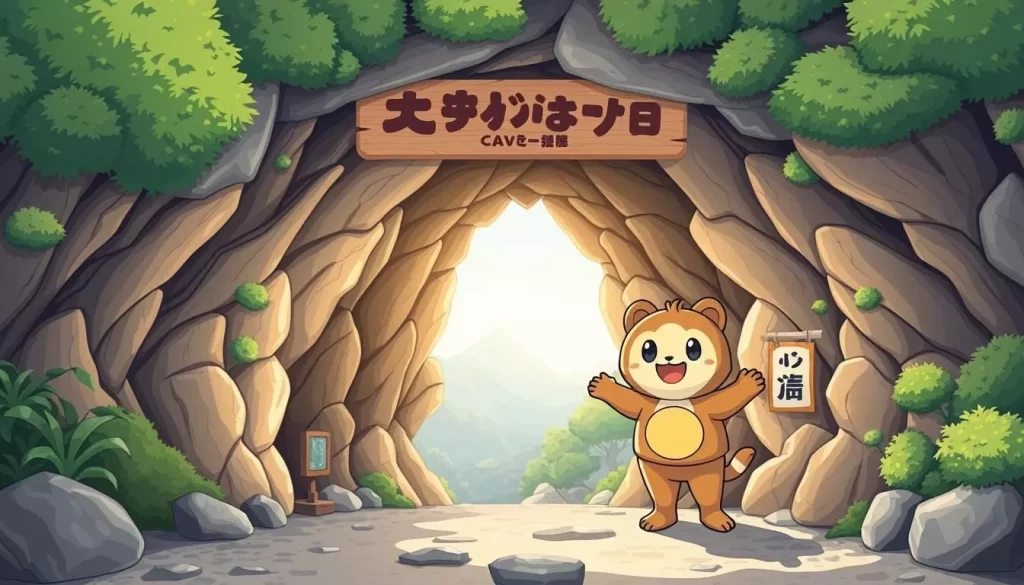
For those seeking an underground adventure, Abukuma-do Caves in Fukushima are a must-visit destination. As you step into the caves, you’re greeted by a cute mascot, setting the tone for a fun and memorable experience.
The caves are renowned for their stunning formations and offer a unique opportunity to explore the underground world. Whether you’re visiting in the winter or any other season, the constant cool temperature inside the caves provides a refreshing escape.
Cave Formations and Exploration Courses
Abukuma-do Caves boast an impressive array of limestone formations, including stalactites and stalagmites that have developed over millions of years. You can explore these natural wonders through various courses, each offering a different level of adventure and insight into the cave’s geological history. Take your time to appreciate the intricate details and majestic beauty of these underground formations.
Visitor Information and Tips
To make the most of your visit, plan ahead by checking the operating hours (typically 8:30 AM to 5:00 PM, with seasonal variations) and admission fees. Wear comfortable, non-slip footwear, and consider bringing a light jacket, as the cave remains cool year-round. Visiting during weekdays or off-peak seasons can provide a more peaceful experience. Don’t miss the picturesque koi pond and the romantic tunnel at the exit, adding to the overall charm of your visit.
Culinary Delights of Fukushima
Fukushima Prefecture is a culinary gem waiting to be discovered, offering a diverse range of local specialties and dining experiences. As you explore the region, you’ll have the opportunity to taste a variety of dishes that reflect the local culture and traditions.
Regional Specialties and Sake
Fukushima Prefecture is known for its high-quality sake and local cuisine, which often features fresh produce from the region. You can sample some of the best sake at local breweries or try traditional dishes like Kitakata ramen, which has gained national fame for its thick, flat noodles and flavorful soy-based broth. When visiting Kitakata city, be sure to stop by Bannai Shokudou, a legendary ramen shop that serves some of the region’s best bowls.
The region’s culinary heritage is also reflected in its food festivals, such as the Fukushima Ramen Show, which takes place in early May. This event brings together ramen vendors from across Japan, offering a unique opportunity to sample a variety of regional specialties. By experiencing the local cuisine and sake, you’ll gain a deeper understanding of the people and culture that make Fukushima Prefecture so special.
Top Dining Spots
When it comes to dining in Fukushima, there are plenty of top-notch options to choose from. Hasegawa Ramen in the Kitakata region is a popular spot for locals and tourists alike, serving perfectly balanced bowls of traditional ramen. You can also visit Shiki no Sato, a complex that hosts the Fukushima Ramen Show and offers a range of other culinary experiences. Whether you’re in the mood for traditional Japanese cuisine or something more modern, Fukushima has a dining spot to suit your taste.
By exploring the local dining scene, you’ll discover the warm hospitality of Fukushima’s people and the region’s rich culinary heritage. From humble eateries to upscale restaurants, there’s something for everyone in Fukushima Prefecture.
Where to Stay in Fukushima
From traditional ryokans to modern hotels, Fukushima provides a variety of accommodations that cater to different preferences. Whether you’re looking for a luxurious retreat or a budget-friendly option, Fukushima City and its surrounding areas have something to offer.
Ryokans and Traditional Accommodations
For a truly authentic Japanese experience, consider staying at a ryokan. Okuniku Onsen Kaniyu, located near the southwestern border of Fukushima and Tochigi, offers a unique opportunity for co-ed bathing, making it an ideal choice for couples. Another standout is British Hills, a surreal English-style resort in the Fukushima countryside, providing a distinct cultural experience within Japan. These traditional accommodations not only offer a glimpse into Japan’s rich heritage but also provide a serene and peaceful atmosphere, making you feel at home.
Some key benefits of staying at a ryokan include:
- Traditional Japanese cuisine and hospitality
- Relaxing onsen (hot spring) experiences
- Unique cultural immersion
| Accommodation Type | Location | Notable Features |
|---|---|---|
| Okuniku Onsen Kaniyu | Nikko, near Fukushima and Tochigi border | Co-ed bathing, traditional ryokan experience |
| British Hills | Fukushima countryside | English-style resort, unique cultural experience |
Modern Hotels and Budget Options
If you prefer modern amenities, Fukushima City has a range of hotels that blend Western-style comforts with Japanese hospitality. For budget-conscious travelers, options like the Ekimae Fuji Grand Hotel near Aizu-Wakamatsu Station offer clean, efficient accommodations with perks like complimentary onsen access. You can also consider staying at Spa Resort Hawaiians, which provides on-site hotel accommodations that give you extended access to the water park facilities and entertainment options, making it a great choice for families or those looking for a fun, laid-back atmosphere.
Some benefits of modern hotels include:
- Western-style amenities and comfort
- Convenient locations, often near major stations
- Variety of price options, including budget-friendly choices
Whether you’re visiting Fukushima City or exploring the surrounding area, there’s an accommodation to suit your needs. From luxurious resorts to budget-friendly hotels, Fukushima offers a diverse range of options to make your stay enjoyable and memorable.
Planning Your Visit to Fukushima City
To make the most of your visit to Fukushima Prefecture, it’s essential to plan according to the season. The region offers a variety of experiences throughout the year, from cherry blossom viewing in the spring to winter sports and festivals.
In the spring, visit famous spots like Miharu Takizakura and Tsuruga Castle to enjoy the cherry blossoms. Summer is ideal for hiking Mt. Bandai and exploring the Goshiki-numa Ponds. Autumn brings spectacular fall foliage, while winter offers skiing, snowboarding, and outdoor hot springs surrounded by snow.
Consider timing your visit to coincide with one of Fukushima’s many festivals, such as the Aizu Festival or the Soma Nomaoi samurai festival. Research transportation options in advance, and check local event calendars to enhance your experience. With careful planning, your trip to Fukushima City will be unforgettable.
The above is subject to change.
Check back often to TRAVEL.COM for the latest travel tips and deals.






